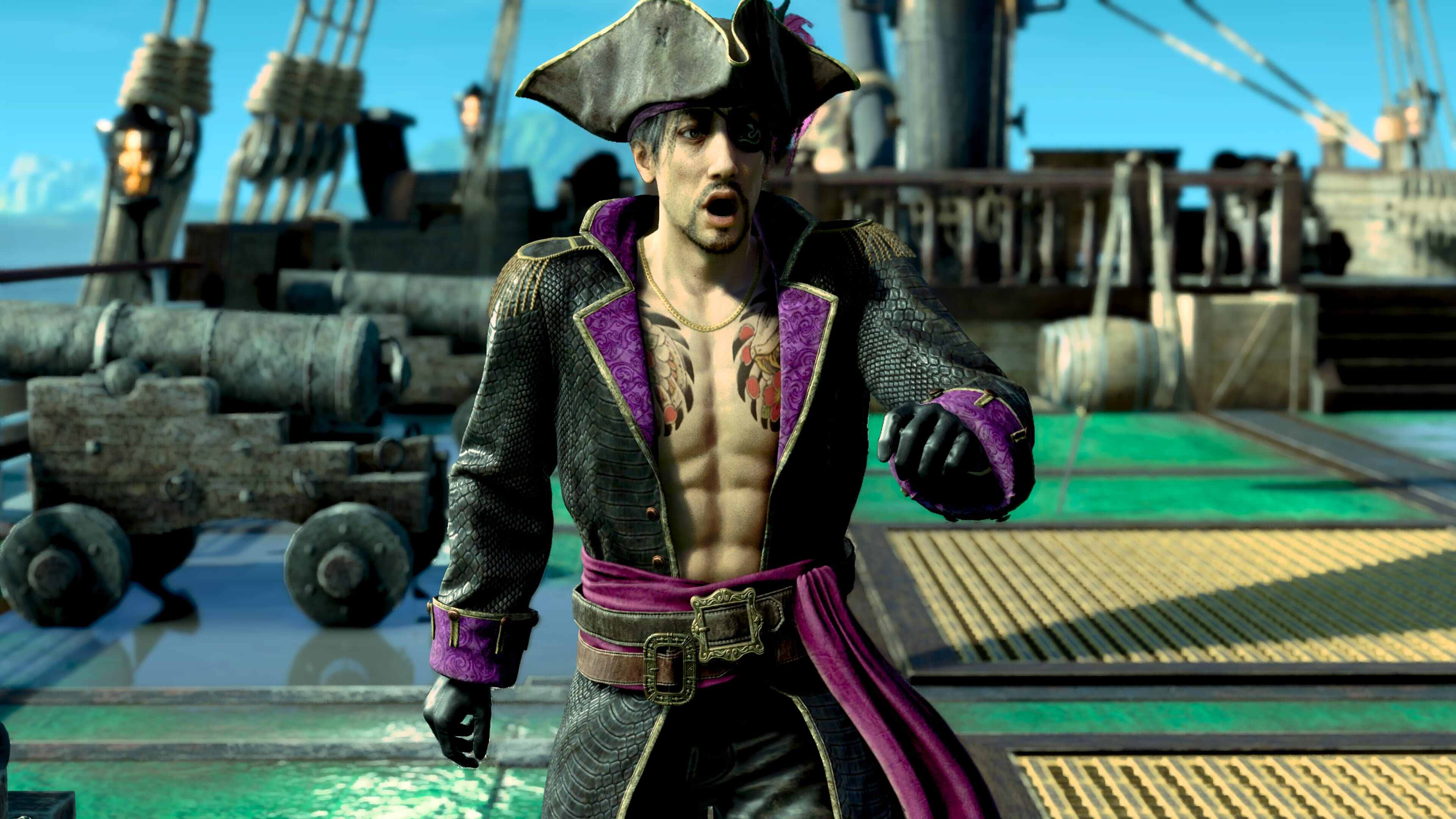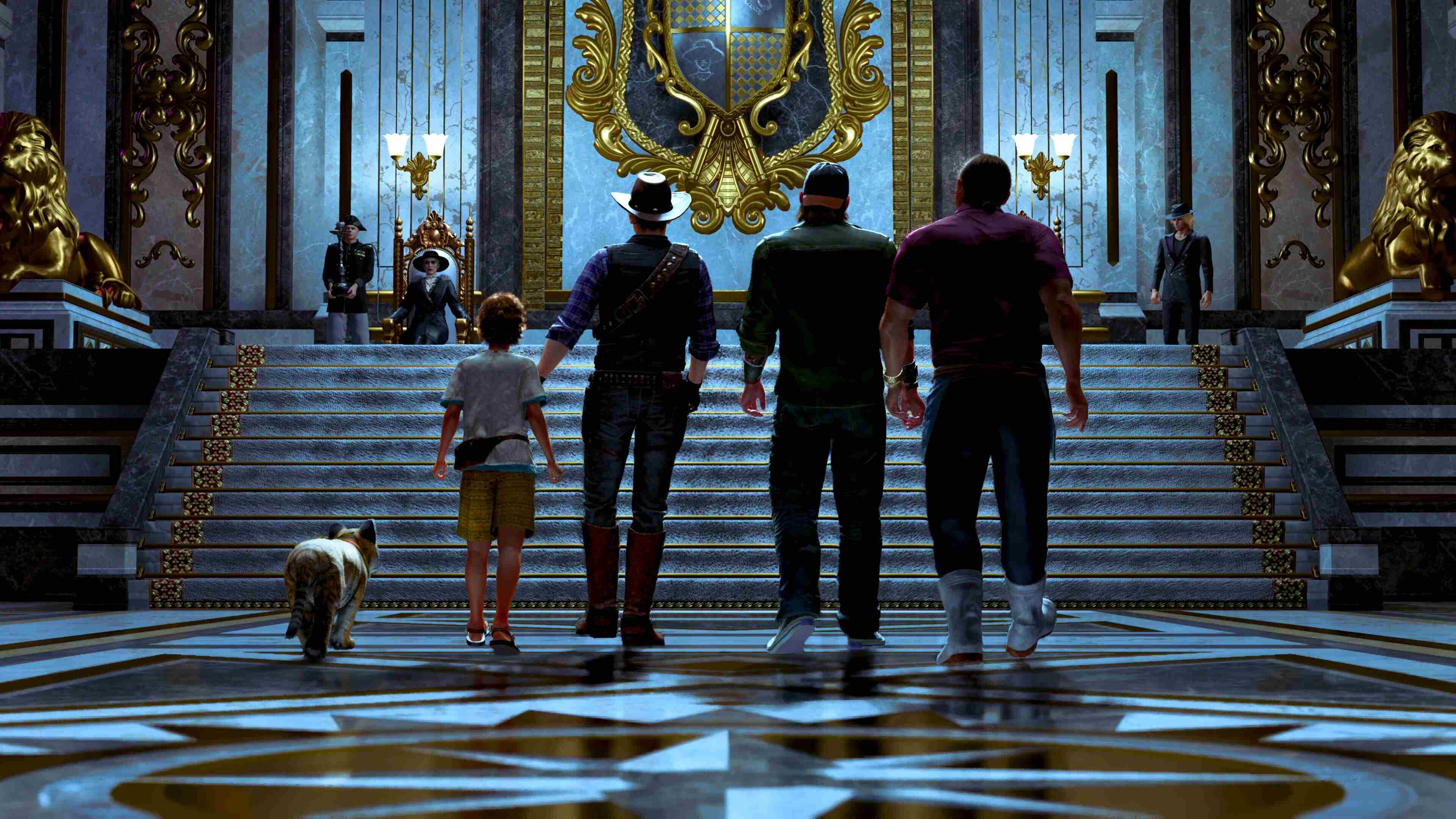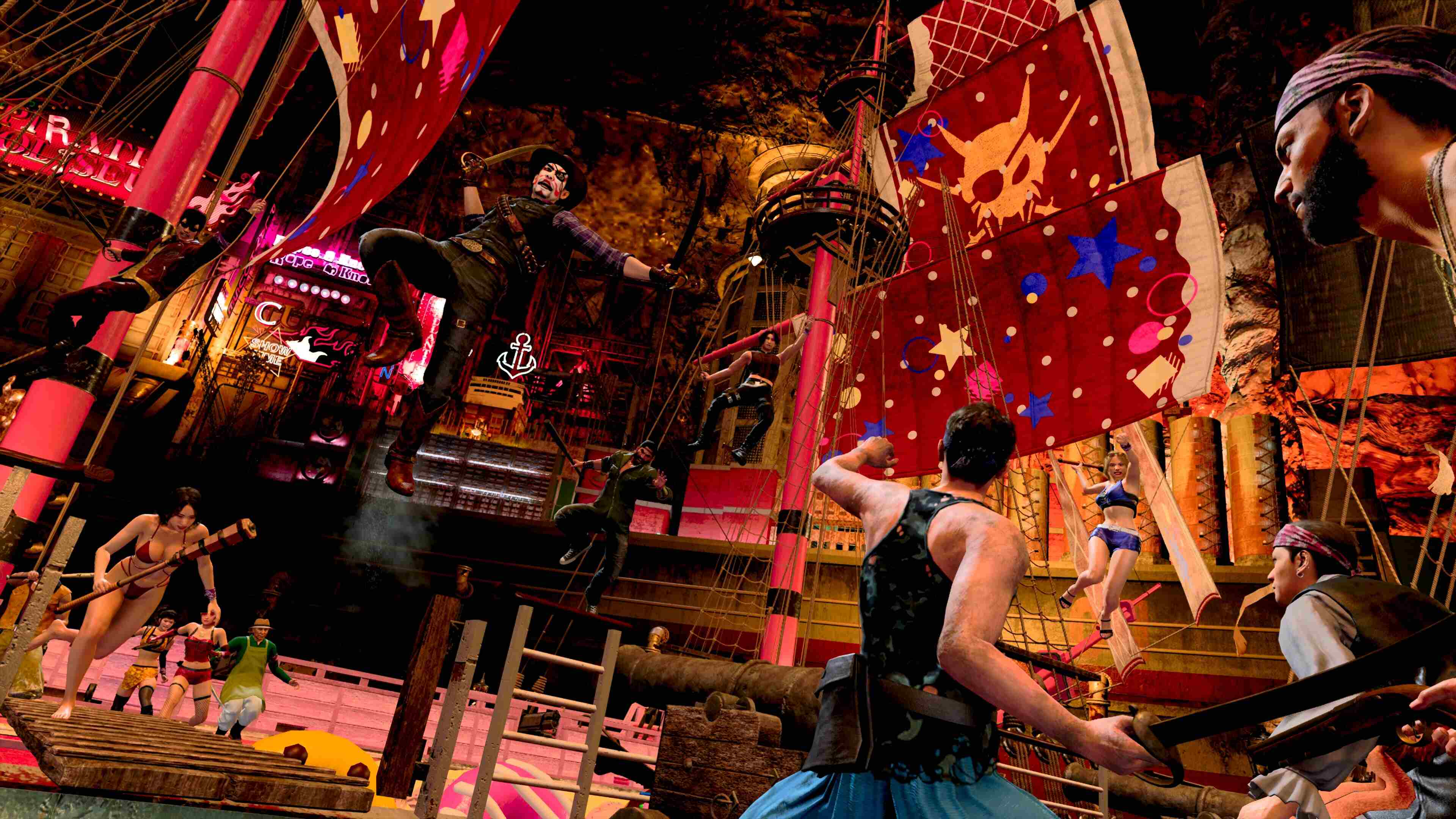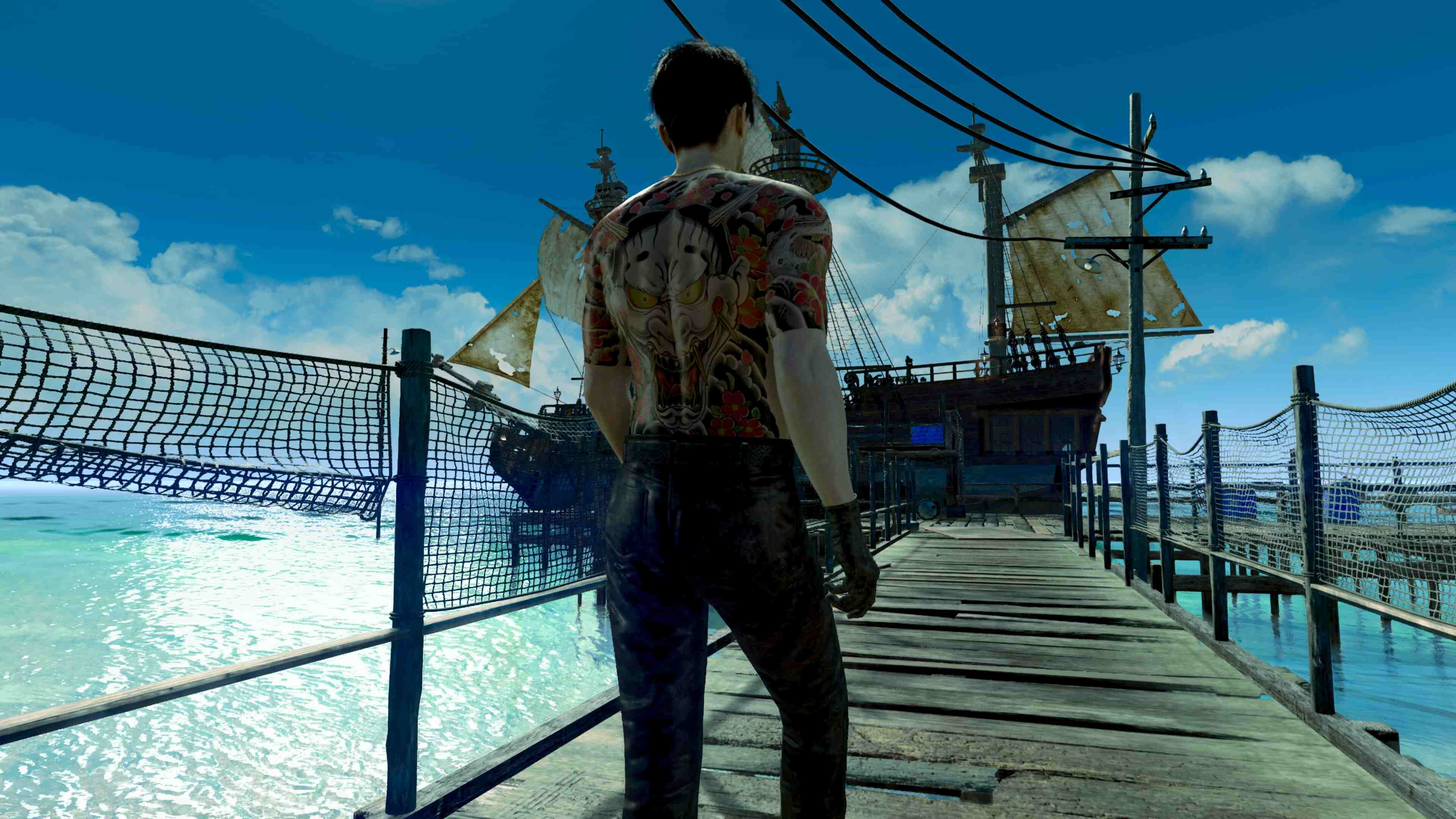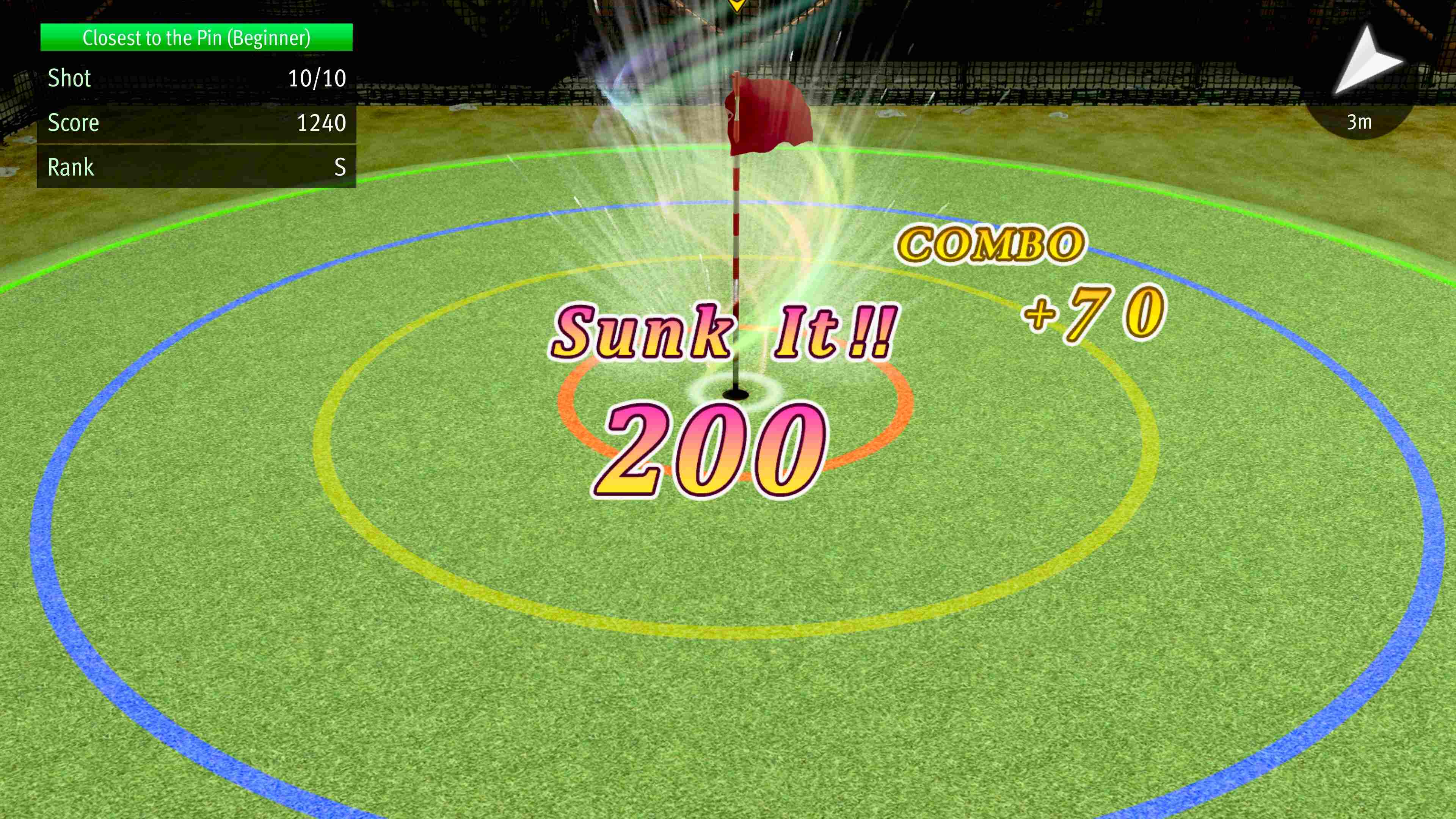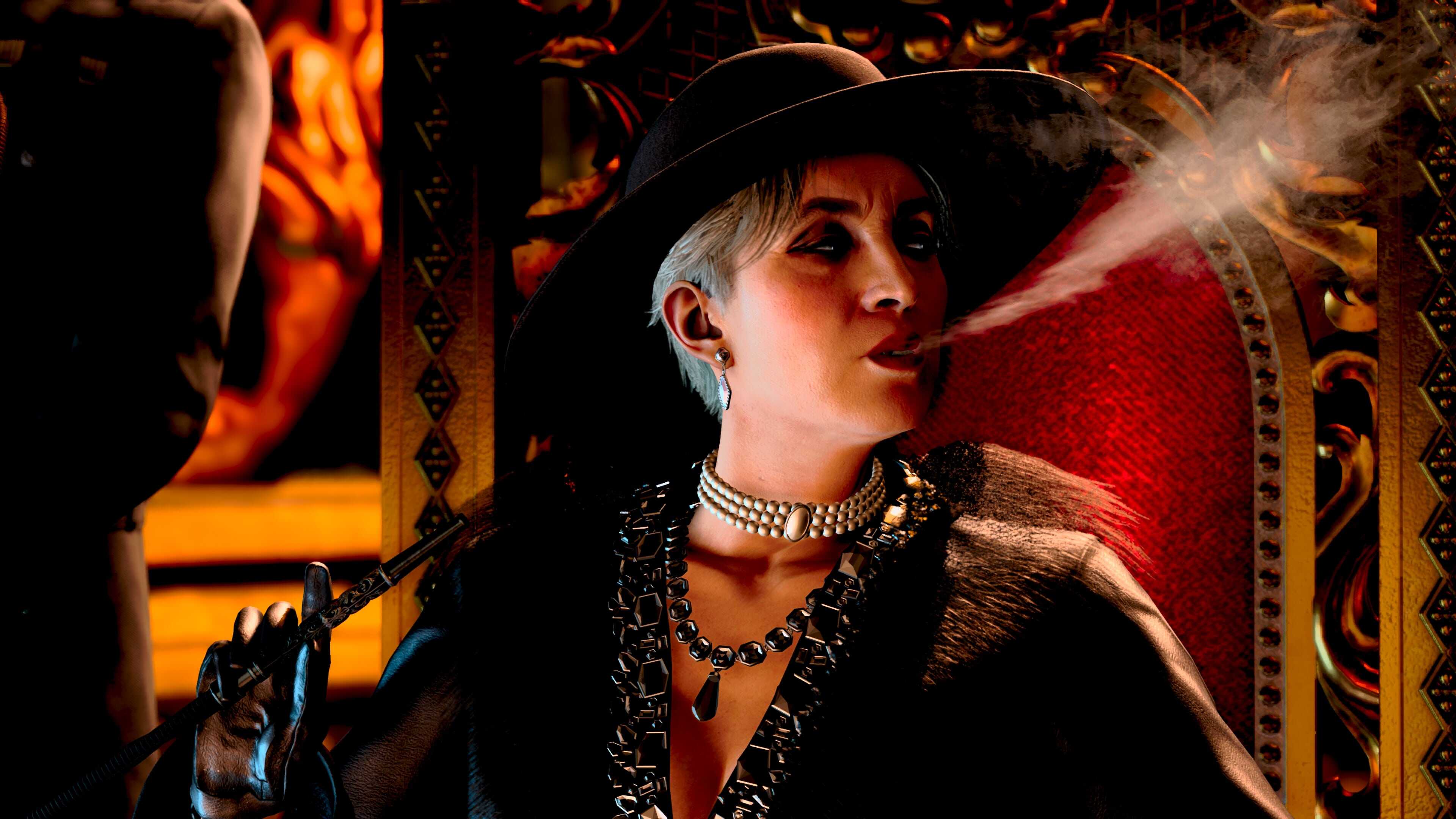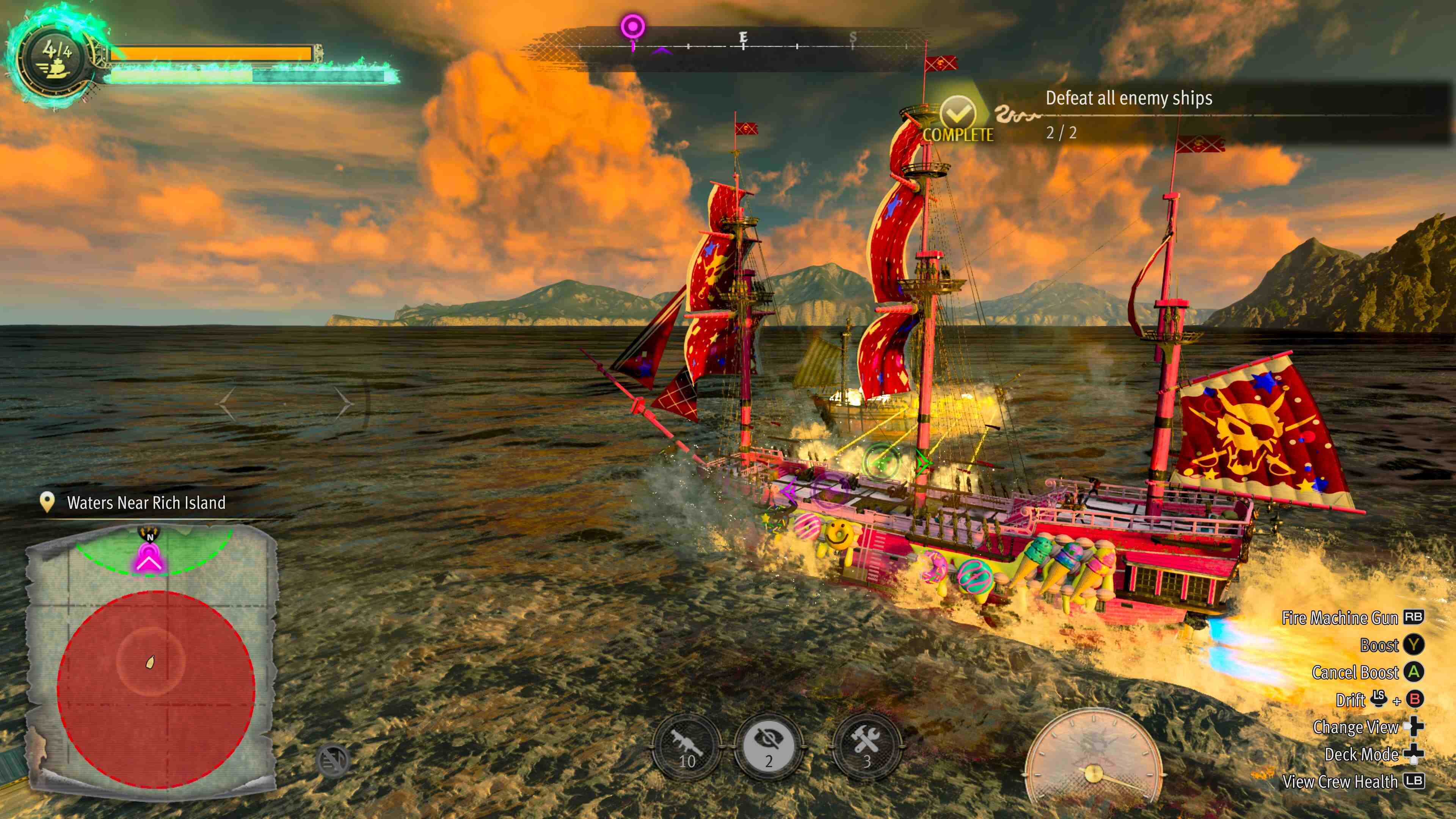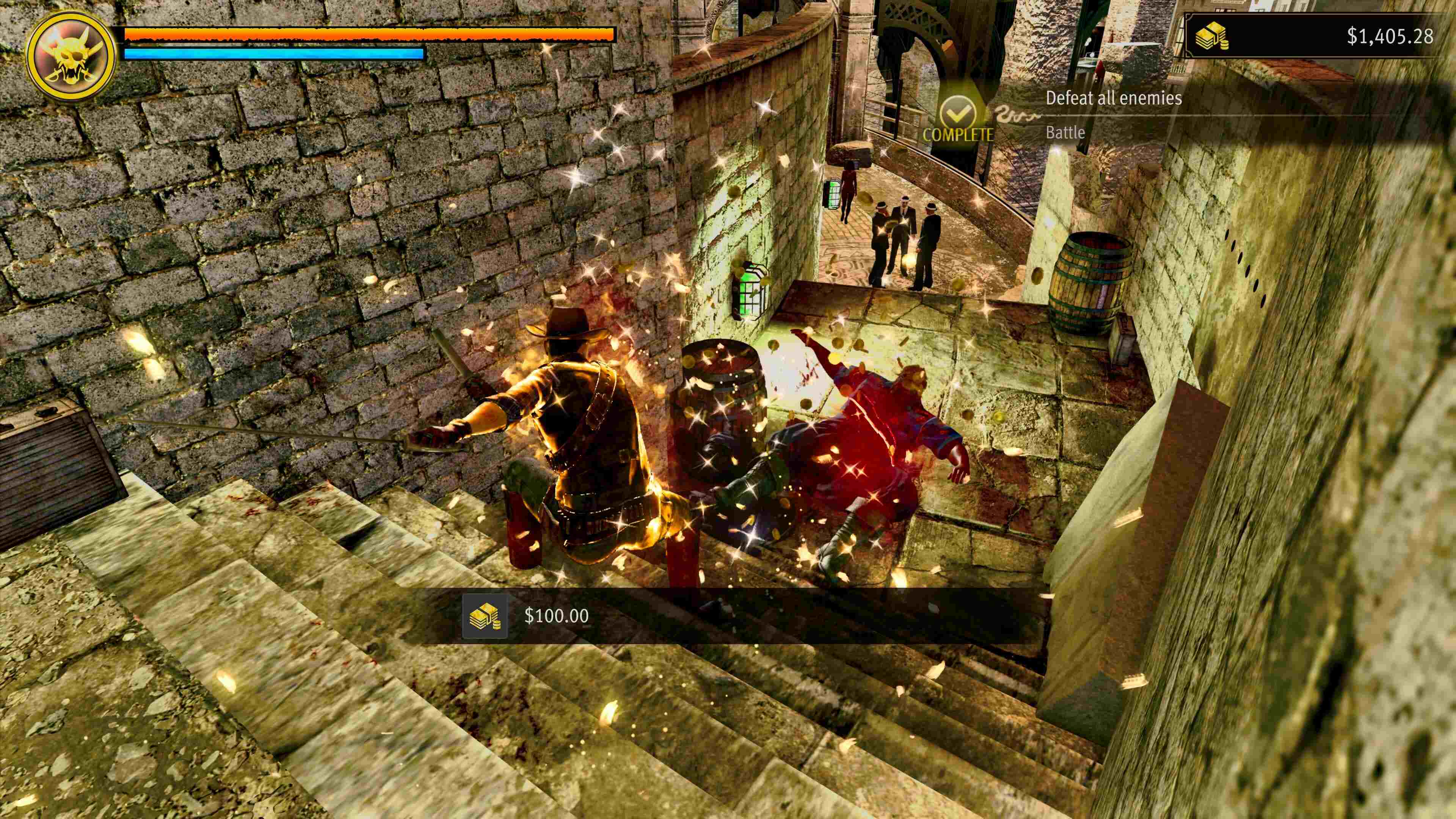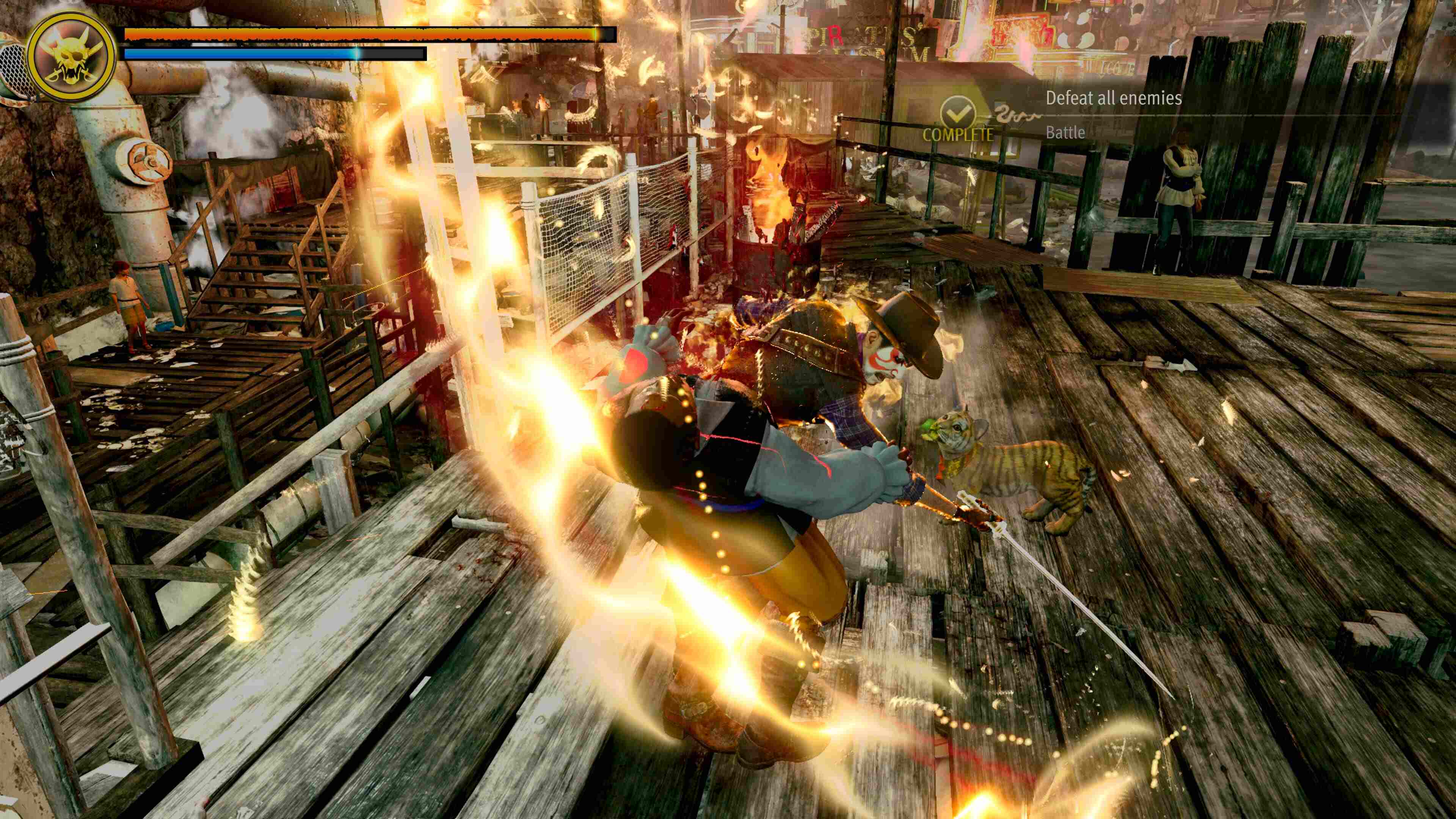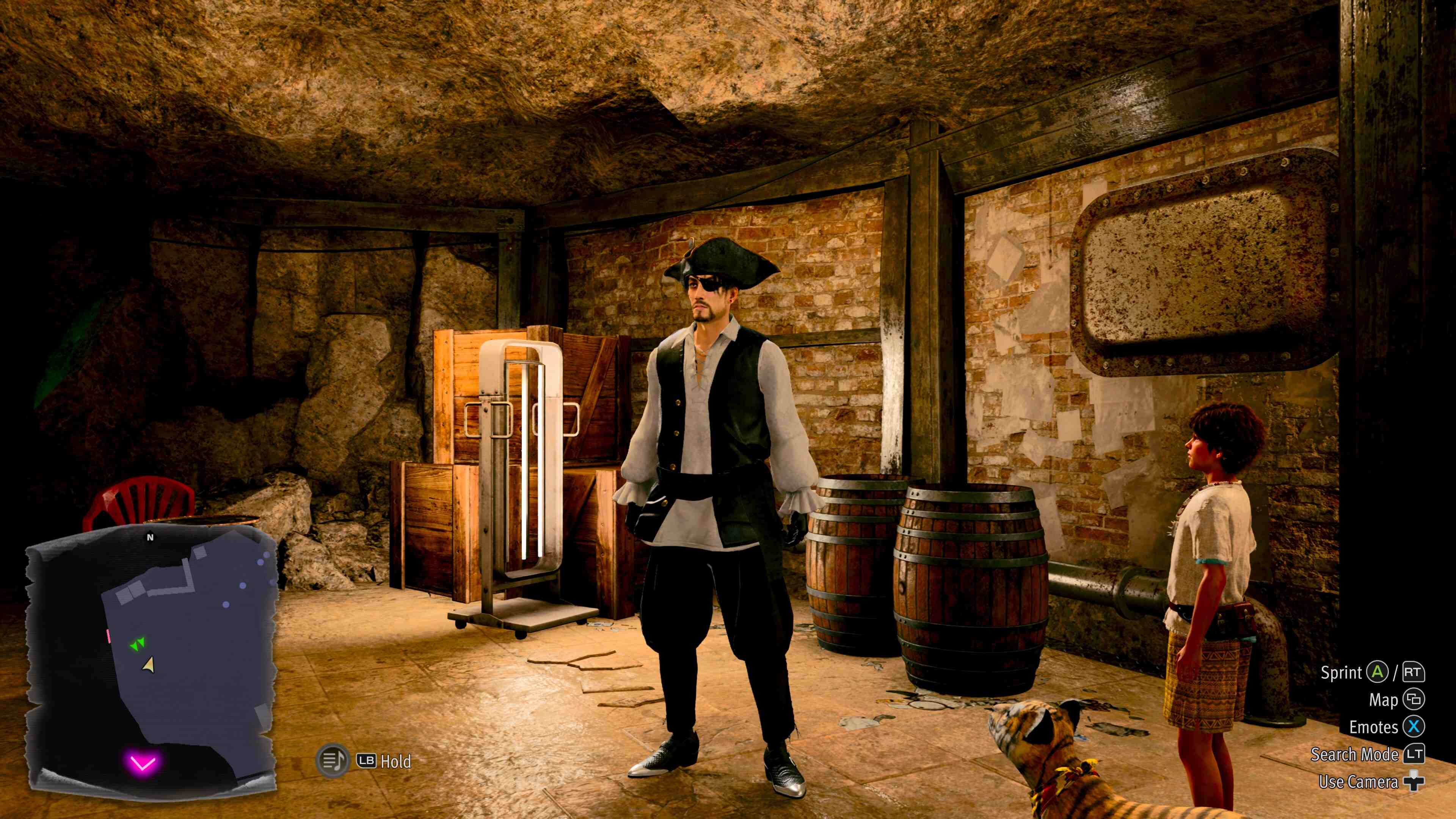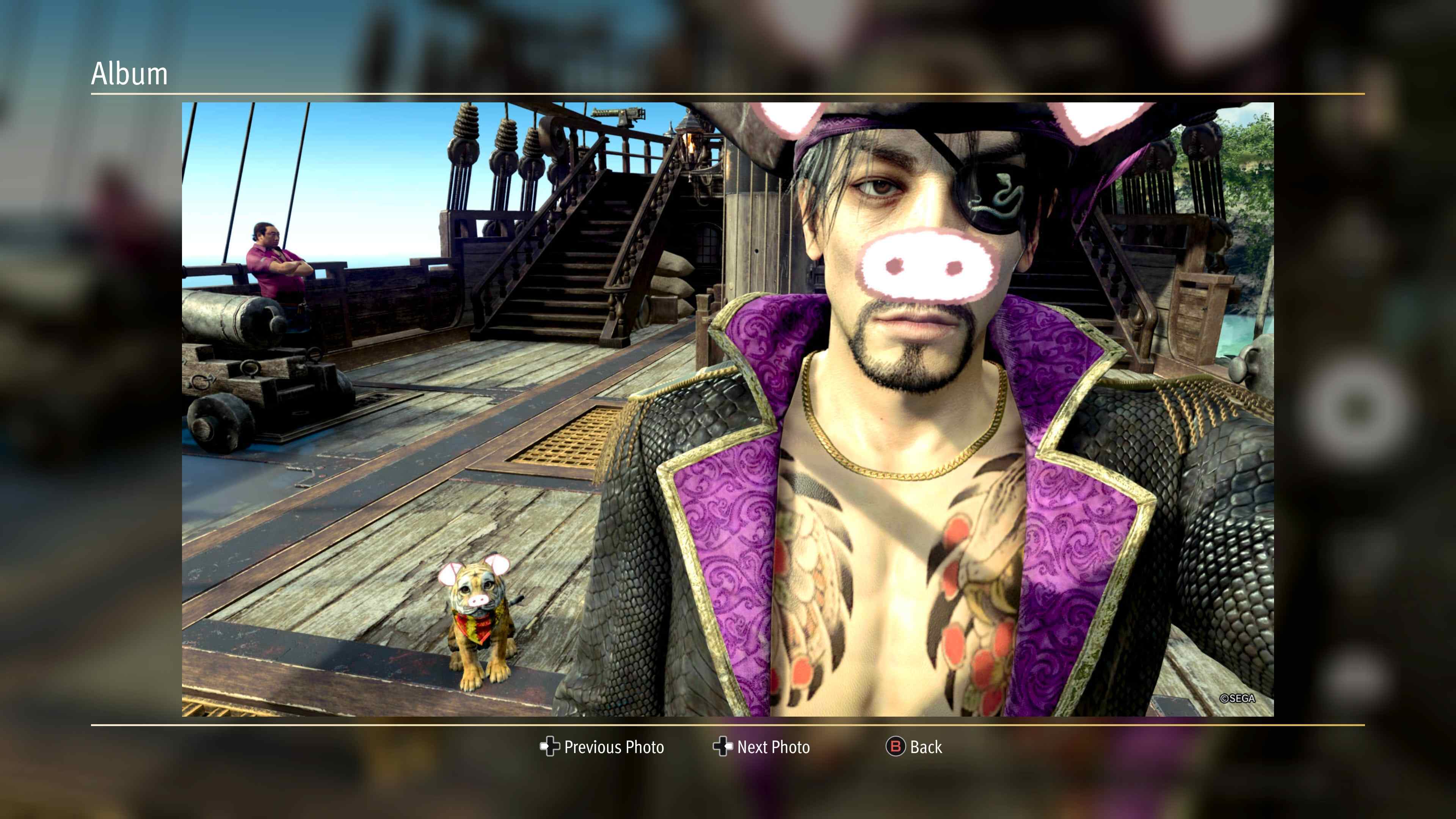The Like a Dragon series, formerly localized as Yakuza, is one I never had on my radar. For years, I’d look at trailers and think to myself, “Yeah, I’m not touching that.” I forever imagined its weirdness was simply too alien for me to find enjoyable.
The opportunity arose for me to tackle Like a Dragon Gaiden: The Man Who Erased His Name back in 2023, and I took it on as an eager gaming reviewer looking to leave his mark. Perhaps, I thought, I was cultured enough to enjoy a Yakuza game. I saw it as the perfect opportunity.
Within hours of starting my voyage, I bitterly realized how wrong I’d been. I had missed years of this franchise based on poorly preconceived notions. Gradually, the compounding interest in the story, minigames, combat, customization, and whatever else that particular Yakuza game had was splashing me in the face. I felt the weight of hundreds of hours of gameplay that all beckoned for me to master.
My journey into Like a Dragon: Pirate Yakuza in Hawaii has been nothing short of the same unyielding gameplay I fell in love with just a couple of years ago. Now, packed into a nautical adventure, Like a Dragon once again finds a way to redefine itself as a worthy sequel that comes only a year after Infinite Wealth.
This review was made possible thanks to a review sample provided by Sega. The company had no input nor saw the contents of this review prior to publication.
The good
Goro Majima takes the helm in the latest entry in the series.
Like a Dragon: Infinite Wealth
Price: $59.99 at CDKeys | Best Buy
Release date: Feb 20, 2025
Developer: Ryu Ga Gotoku Studio
Publisher: SEGA
Genre: Action-Adventure
Players: Single-player
Install size: 49.0 GB
Playtime: 30+ hours
Platforms: Xbox Series X|S, Xbox One, Windows PC, PlayStation 5, PlayStation 4
Xbox Game Pass: Yes
Reviewed on: Xbox Series X|S and PC
Waking up on the desolate shores of an island outside of Hawaii, Goro finds himself wrecked with amnesia, forgetting even his name. What’s more, he’s alone.
There’s no one around who knows who he is as he wakes up to a ten-year-old named Noah, who starts a fight with some pirates in the first couple minutes. Yep, this is definitely a Yakuza game.
Mad Dog finds himself butting stern first with a group of pirates running amock on the island. Causing nothing but issues with the locals, Goro takes it upon himself to raid the ever-present pirate Keith and plunder his own ship. One that may lead to fortunes that are yet untold.
The once proud leader of the Majima family finds himself encompassed by hordes of pirates as he looks to climb the ranks of the Madlantis underworld. Forget his memory.
Why remember who you once were when what you are now is a pirate who has yet to find his potential? Goro thinks the same and sails forth at full speed.
I don’t want to give away too much of the story. The winds and waves of Like a Dragon games are part of the fun, and spoiling anything now would put a proper cannonball-sized hole in the chest of gamers.
What you should know is the story is as excellent as it’s always been. Hot on the heels of events in Infinite Wealth, Pirate Yakuza in Hawaii gives a unique take on the Yakuza events that can’t keep themselves from happening in Hawaii.
Pirate Yakuza in Hawaii’s combat
I wasn’t sure how I felt about combat at first. It felt like a sloppier version of Like a Dragon Gaiden: The Man Who Erased His Name.
Cutting the anchor loose from that of the turn-based combat, Pirate Yakuza in Hawaii takes another crack at the free-flow combat Kazuma Kiryu popularized in his last entry.
Over time, the depths of the systems at play bore fruit. A plethora of unlockable options started to rope me in. I found myself swapping back and forth much more frequently than I did in Like a Dragon Gaiden because I found the two styles incredibly useful from beginning to end of most combat situations.
I was smiling whether I was in a crowd, pitted against a singular boss enemy, or closing the distance between Goro and some deranged pistoleer. The combat punished me for over-extending and rewarded me for patience.
Any frustration I was enduring happened because I started button-mashing in hopes I could neglect the consequences.
Playing the pirate in Hawaii
I was in a boat similar to the combat when it came to authentic pirating. I wasn’t totally in love at first, as it takes an entire chapter before the pirate ship portion of the game starts to take off.
The beginner ship doesn’t quite make a good impression, but like all things Yakuza, it’s the culmination of ideas that come later, which leads to a massive payoff. The pirating ended up becoming absolutely addictive.
Sailing the open seas, speeding through materials, battling degenerate pirates, and plundering booty from nearby islands. The total package hits perfectly late in Chapter 2 when you’re forced into a brutal colosseum-style battle between pirates.
The king of everything else
The minigames yet again reign supreme. You can just chill playing darts, blow loads of gunpowder with batted cannonballs, and crack bombs downfield in a closest-to-pin challenge. Each feels rewarding, thanks to the shop system.
Acquiring points in any game leads to literal treasures that include rings, money, pirate points, and other trinkets that will either give you a combat or venture capital advantage.
There are so many other wonderful things in this game that deserve attention, like the bounty system, which tracks the player by finding outlaws scattered across different areas. Each presents their own level of challenge with a bounty reward equal to said challenge.
Then there’s the segway scooters, a favorite of mine returning from Infinite Wealth that they’ve taken to the next level. Forget the taxis; take out a high-bar pink neon spitting two-wheeler that’ll cause burn-in on your OLED TV for being so damn bright. I just wish I could pair it with a ridiculous solar-powering hat.
I’ll let you find more for yourself, as some surprises are best left to the player. Needless to say, there’s a lot to do. Then again, I’ve said it already, but it’s a Yakuza game. You expected a metric #$%@ ton of things to do.
The bad
I have one problem with the game. It’s an issue I haven’t generally cared about before, but the Dragon Engine is really starting to show its age. From low-resolution surfaces to intensely poor FSR, the cross-generation development of Like a Dragon: Pirate Yakuza in Hawaii is getting painful.
The annoyance becomes obvious from the start. Sand and rock textures on the island are rough in the ways you don’t want sand and rocks to be rough. The geometry is entirely missing from most surfaces and instead replaced by a flat two-dimensional surface.
We’re now 5 years into the current generation, and Ryu Ga Gotoku Studios is still developing their games for PlayStation 4 and Xbox One. I get that there are a large number of users on those platforms still, but this hurts potential customers looking for a better experience if the only noticeable difference on their higher end systems is framerate.
The area that suffers most isn’t surface textures; it’s the water. When most of your game is based on pirating across the ocean, you better make sure your water looks good enough to sail. For me, Like a Dragon: Pirate Yakuza in Hawaii entirely missed this mark.
Just to see if I was crazy, I went back and watched gameplay from Assassin’s Creed: Black Flag. I debated which looked better or worse, and in neither case could I decide. The representations of the seaplay are just that dated.
Like a Dragon: Infinite Wealth — Final Thoughts
You should play this if…
✅ You enjoy the Yakuza/Like a Dragon series, or if you want something new to try
I will continue to trumpet this point. More people need to jump into the Yakuza/Like a Dragon series. It’s amazing what the developer can do with so little time.
✅ You’re looking for that Black Flag kick
While it’s not super realistic by any means, it’s a fun, off-beat pirating adventure that has boarding and plenty of buccaneers to blast off the waters.
You should not play this if…
❌ You want the next great-looking game
At times, Like a Dragon: Pirate Yakuza in Hawaii really shows its age, and it can be downright ugly. If that’s a dealbreaker for you, perhaps wait for an entry in the series that ditches last-gen hardware.
It’s time for players to jump in and experience what Like a Dragon has to offer. If you’ve never tried one of their games, I absolutely urge you to do so now. It’s $60, but it’s an absolute treasure trove of gameplay for a multitude of players.
If you appreciate anime, you’ll love the story of Pirate Yakuza in Hawaii. If you like minigames, look no further. If you miss Assassin’s Creed Black Flag, get ready to plunder.


